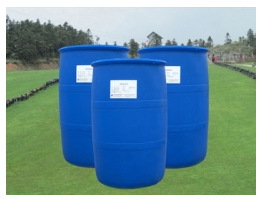The surfactant is basically unchanged in the reaction process and can be reused. And its dosage is very small, but how small is appropriate, still need to be determined by experiment according to different conditions. For example, in the production of poly (2,5-dibutyloxy-p-phenylacetylene), the yield of the product first increases and then decreases with the increase of the amount of active agent. This is because the active monomer formed in the aqueous phase is transferred to the organic phase by virtue of the action of PTC to participate in the polymerization. Therefore, the initial yield increases with the increase of PTC dosage When the amount of PTC exceeds a certain limit, the concentration of the system increases and is very viscous, which is not conducive to the monomer transfer reaction, resulting in the decrease of polymerization yield.

The type and structure of surfactants also have great influence on the reaction results- For example, for the reaction of dibutyloxy to phenylacetylene, the yield of bromine salt as PTC is higher, and butyl quaternary ammonium salt is better than methyl quaternary ammonium salt. For example, benzyltriethyl ammonium chloride has better catalytic effect than tetramethylammonium chloride because phenyl substitutes one methyl in tetramethylammonium chloride, and its catalytic effect is equivalent to that of tetramethylammonium bromide.
The role of surfactants in various electrochemical aspects makes people wonder whether the current efficiency and conversion can be improved by adding surfactants in Direct Electrosynthesis. It is proved that it is feasible in some systems, such as the electrolytic reduction of oxalic acid, the electroreduction of acrylonitrile to adiponitrile, and the electroreduction of p-nitrobiphenylbenzene from acrylonitrile.
However, the experiment also found that not all surfactants have a positive effect on the reaction, such as a -The results of anodic hydrogenation of aminonitrile showed that active tetraethyl-p-toluenesulfonic acid amine and tetrabutylammonium bromide could assist the transfer of cyanogen ions between two phases and increase the yield; the addition of lithium perchlorate could increase the conductivity of the solution, but had no significant effect on the yield and selectivity of the reaction; after adding tetrabutylammonium iodide, the oxidation potential of iodine ion was low However, most of the current is consumed in the oxidation of iodide, because the yield of the reaction is low. The addition of lithium perchlorate polyethylene glycol (400) and thirteen alkyl sulfonate can reduce the yield, because the viscosity of polyethylene glycol is large, and sodium alkyl sulfonate will cause a large number of bubbles to produce, which is not conducive to mass transfer. Therefore, it can only be said that adding suitable surfactants to the electrochemical reaction system is beneficial to improve the yield and selectivity of the reaction.